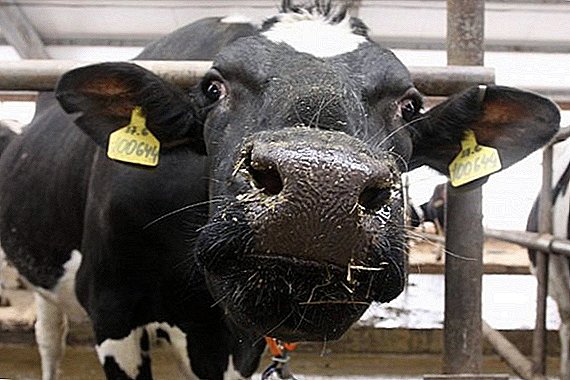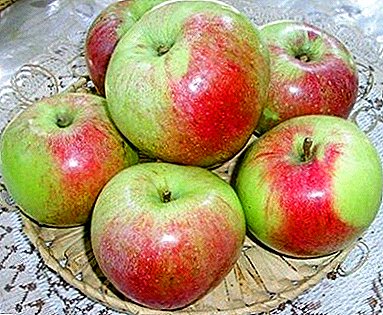 A good chicken coop is a guarantee of health and good bird productivity. In cramped conditions, where it is dark and dirty, feathered animals cannot even provide the breeder’s personal needs for meat and egg products. Therefore, on the abode of the wards should think in advance. How to independently make a comfortable house for 30 chickens, we will tell later in the article, with visual examples of drawings and diagrams.
A good chicken coop is a guarantee of health and good bird productivity. In cramped conditions, where it is dark and dirty, feathered animals cannot even provide the breeder’s personal needs for meat and egg products. Therefore, on the abode of the wards should think in advance. How to independently make a comfortable house for 30 chickens, we will tell later in the article, with visual examples of drawings and diagrams.
Features chicken house for 30 chickens
If you have the slightest experience in building basic household buildings, building a chicken coop is not difficult. Initially it is important to choose a well-lit, flat area. Darkness and dampness in breeding chickens are not helpers, therefore it is unacceptable that rain and melt water should be collected at this place. You should also avoid lowlands, where cold air always settles.
Did you know? The most delicious chicken in the world is the French Bress Gali breed. She is known for the fact that since 1957 she has been the only owner of the AOC quality mark. For the sake of this bird, the French annually arrange a magnificent chicken show, where farmers have the opportunity to compete for the best carcass. Winning this competition is very prestigious. In addition, each manufacturer is encouraged by a cash prize of 10 thousand euros.
For 30 "residents" do not need too spacious house, because in the future its heating and lighting will result in a decent amount. For a comfortable stay of such a number of birds enough and 8 square meters. The area is calculated based on the fact that 3 "meat" or 4 "egg" hens will be planted on each square.

Indoors it is necessary to provide as much as possible window openings. This will allow daylight savings on lighting design. Just do not forget to take care of the vent and the insulation of windows in the winter.
In order for the wards to remain safe and not be deprived of the possibility of a free range, a metal aviary with a shed is being built in the house. The dimensions of these extensions should not be less than the room. And so that the birds do not crawl under the net, it is deepened to 20 - 30 centimeters into the ground.
If the wallet allows, you can not bother with the construction, find out how to choose the right chicken coop when buying.
Basic requirements for the coop
Novice gardeners often have many questions concerning the location of the structure, its internal and external arrangement. Mistakes made at the initial stages of construction are usually the main factors affecting the reduction of egg-laying, frequent diseases and growth retardation of the wards.

Let us consider in more detail the main nuances to which attention should be paid.
Important! So that chickens do not have worms, veterinarians advise, for preventive purposes, every month for 3 days, wards of different ages should be watered with fresh decoction of chamomile and sorrel.
Location and Fence
When planning a construction site, first go around your compound in search of a suitable zone. In this case, consider the following rules:
- Never place a chicken coop in swampy and damp places.
- Prefer elevated zones.
- Experienced poultry farmers advise tinkering rectangular designs, orienting them from east to west.
- The windows in the room should always be made on the south side, and on hot summer days they are sure to be tinted.
- The ideal site for construction is a remote, quiet corner of an economic yard, where there are no sources of noise nearby. It is desirable that other animals and people rarely appear alongside.
- It is very good if the structure is separated by a hedge that will not allow the bird to cross the territory set aside for it, protect it from the wind and serve as a source of insects. Of course, such landings should be planned from the north. If this is not possible, be sure to protect the chicken coop with a thick fence made of wood, metal or chain-link mesh.

Microclimate
For continuous egg production, chickens throughout the year are important heat, dryness and light. Therefore, the cottager-builder should foresee heat insulation of the walls (for example, using foam plastic or mineral wool) and an internal heating system.
Poultry feels comfortable at stable 12 - 20 ° C. It is important that cold does not penetrate through the window gaps, do not walk drafts. In extreme heat, birds may stop laying. Therefore, in the summer is very useful ventilation hatch. It is unacceptable that in the warm season the temperature in the room was above + 25 ° C, because it will not be the best way to affect the number of eggs and the quality of meat products.
Learn how to build a chicken coop for laying hens and broilers.
Wet weather threatens the cold season during the cold season, and if this factor can be ruled out on the street, there is nowhere to hide from excessive moisture in the hen house. Its optimal level is 60 percent. With higher stable rates, chickens get sick and die.
You can solve the problem with the help of a ventilation system. For this purpose, many owners cut through small barred rectangles in front of window frames or place under the roof at a distance of 35 cm from the cover 2 pipes with dampers to regulate air exchange.

Arrangement
Mandatory internal attributes of any chicken coop are:
- perches;
- nests for layers;
- drinking bowls;
- feeders.
Important! When arranging a house, experienced owners protect window frames with plywood shutters or put a grid on them so that chickens do not break the glass.
Everything else is superfluous. The main task is to minimize objects and create comfort for birds with their help.
Ventilation
Regular airing of the coop is necessary for its inhabitants. The fact is that the evaporation of harmful ammonia vapors, in addition to an unpleasant smell, carries the threat of poisoning of poultry.
This, in turn, is fraught with a loss of egg-laying indicators, diseases and deaths of the wards. In addition, ventilation helps to control indoor temperature and moisture.

Lighting
For the full-fledged development of chickens, it is important that the length of daylight hours be at least 10 12 hours. Therefore, experts advise to equip additional lighting in poultry houses. Today in the market assortment there are many relatively inexpensive options to address this issue. You can choose LED, fluorescent, energy-saving or incandescent lamps. It should take into account the rules of fire safety.
Important! Periodic darkness is important for all domestic birds. At this time, they form bone tissue, change calcium metabolism (which is important for the durability of the shell), produces immunity. Consequently, it is not worthwhile, to the detriment of your wards, to chase after continuous high rates of egg-laying and to cover the hen-house all night.
Protection of the coop from predators
Experienced kurov advise summer residents to immediately exclude the possibility of penetration of rodents and predators into the house. To do this, during its construction it is desirable to prepare a cement foundation. In the future, such a floor requires insulation.

Proceeding from their need for additional costs, many owners reduce the cost of construction, making wooden floors. In this case, it is important to eliminate all the gaps and holes, and to lower the walls with tin sheets.
Some craftsmen protect livestock scattered splinters of glass or metal scattered under the chicken coop, and also finely cut the wire. The same material can be scribbled under the floor covering.
Learn how to deal with affection, rats and a wild ferret in a chicken coop.
Chicken coop for 30 chickens with their own hands
When all the nuances are taken into account and the right place for the construction is chosen, you can start work.
Designing a chicken coop for 30 chickens
Every master knows that initially it is necessary to draw a draft of a future construction, and for this it is required to calculate its dimensions. Based on the recommendations of experts, it is possible to plant no more than 2 - 3 adult chickens on each square meter.
 Example drawing a chicken coop
Example drawing a chicken coop
In this case, we propose to construct a dwelling with an area of 8 - 10 m2. If desired, you can make a small stock for a possible expansion of the population, but taking into account the cost of maintaining the house. But to reduce the chicken territory is not worth it, because such a decision is fraught with consequences.
Important! The color of the lamp, which illuminates the chicken coop, affects poultry differently. For example, blue calms down chickens, orange - stimulates their reproductive function, green - promotes growth, and muffled red prevents the layers from laying eggs.
Near the chicken coop in the sketch it is necessary to provide walking, the territory of which is calculated taking into account the fact that each individual needs about 2 square meters of free space. This means that for 30 chickens you will need an enclosure ranging from 20 to 50 m2.
Well-designed schemes and drawings with the application of specific sizes will allow you to collect the necessary materials and provide inside the chicken coop a place for spending the night, feeding and keeping the young.
 Example drawing a chicken coop
Example drawing a chicken coop
Device foundation chicken coop
First of all, let's start pouring a solid concrete foundation. Note that there are several variations of it, intended for wintering and summer-autumn housing of poultry.
Learn how to build a chicken coop for 20 chickens, for 50 chickens.
The winter version provides for a deeper fill, which is measured by the thickness of the soil freezing. It is important to take into account that the base can withstand the rest of the structure. Such a construction will cost the owner not cheaply, but his wards will be protected from cold, damp and external threats. Immediately it is necessary to calculate its capacity so that in the future the hen house would idle without idleness. It can be used at any time of the year.

Such a foundation is made by digging a trench around the perimeter of the designated area, into which a wooden formwork recessed by 10 centimeters is installed. Cement mortar is poured inside. The width of this platform corresponds to the thickness of future walls. After pouring the concrete, the trench is covered for 4 days with sacking.
Did you know? The most tailed roosters on earth are representatives of the Chinese breed Fen-Huang (Onagadori). At one time they were symbols of the empire and the personification of wisdom. It is believed that these owners of ten-meter tails can bring good luck in the search for life truth and even treasure.Summer version of the house is much easier to build. To do this, it is quite enough to fill the foundation with a width of 10 cm and a depth of 30 cm. In budgetary wooden structures, you can do without this element. However, due to the close contact of the boards and the damp earth, such a structure cannot serve for a long time.
Laying the floor
Regardless of which option you prefer, the hens need heated floors. Earthen and clay for these purposes are strictly contraindicated. Also cold concrete, on which moisture will accumulate in winter, does not fit either. According to experts, the best is the board option.

For this, many dig a hole 20 centimeters deep, cover it in half with rubble, fragments and pour it with concrete. Other craftsmen at the bottom of the prepared pit put a galvanized mesh with cells no more than 12.5 mm. Sand is poured onto it and poured with cement.
Both methods require additional insulation. It can be done with the help of flooring boards, roofing or thick rubber.
Find out in more detail what kind of floor to make in the hen house.
Walling
The choice of building material for the walls of the coop depends on its purpose. Summer houses, which will function only in summer, can be made of 25 mm thick boards. And winter variations require stock up on bricks, cinder blocks, shell rock or a thick bar.
The height of the walls must be calculated within 1.9 m.

Step by step instructions on how to build walls from a bar:
- From above on the foundation for waterproofing, lay a roofing felt.
- Design the first crown, connecting the ends of the wooden building material in half.
- From above arrange the bars with a cross section of 10 x 15 cm. Note that every half meter the logs are laid on the edge, and the resulting space is filled with glass wool.
- Subsequently, subsequent rims of the bars are lined up, which are attached to each other according to the "thorn-groove" principle. Between them is recommended to lay any insulation.
- Fastening can be done with the participation of wooden rods, which are called dowels. For this purpose, holes are drilled in the bars, and then they are hammered into them, so that they completely pierce the material and pierce the previous timber.
- Warm glass wool on both sides of the wall, and in addition to the outside, also sheathe plastic sheets.
Important! When arranging in the chicken coop of furnace heating, be sure to leave a concrete floor under the stove within a radius of 1 meter. The same rule applies to the stove.
Roofing device
The easiest and most accessible for beginners is a shed roof. If you have experience in building gable structures, in addition your feathered wards will receive reliable protection from overheating and overcooling. In addition, it will reduce the cost of heating the room. The resulting space between the roof and the ceiling can be used as storage for gardening tools, tools or bedding.

The construction of this option provides for the following actions:
- First, at an angle of 35 - 50 degrees, install the rafters and attach them to the walls.
- Lay the wooden ceiling on top of the walls and warm it with glass wool, then sheathe it with chipboard.
- Attach any roofing material to the rafter.
Learn in detail how to light up a chicken coop in winter, what a light day should be in a chicken coop.
Lighting
Additional light contributes to a 30% increase in egg-laying chickens. In the summer, when the sun sets after 9 o'clock in the evening, the birds have enough daylight hours for full-fledged life. And in the winter requires the inclusion of lamps. Usually they are used from November to March.
Excessive number of lamps will interfere with chickens, so do not choose too powerful. For 6 square meters, a single 60-watt incandescent lamp is enough. If you prefer fluorescent, stop at a power of 40 watts, energy saving - 15 watts.
Did you know? The rating of the most rare hens is headed by the Vietnamese breed of fighting heavyweights - "Ga Dong Tao". In the world there are only about 300 individuals of this variety, which are distinguished by a hypertrophied nut-like crest, a heavy constitution and very thick scaly paws. Characteristically, the girth of an adult rooster's leg corresponds to the girth of a child's hand.
Lighting should be installed on the ceiling above the feeders and drinkers, and the nests and perches should be shaded. If desired, you can equip the automatic control over the operation of the devices. This is done using a relay.

Ventilation
To equip the ventilation of the chicken coop in several ways:
- Naturally. It assumes the presence of a vent. When the door is open, the air circulates freely indoors. The main thing is to correctly place such a hood. Experts advise to do it in the ceiling or above the door, which will exclude the possibility of drafts. If desired, you can build a shutter that will allow you to control the air exchange.
- Forced-air and exhaust. Its principle of operation in many ways resembles the previous method, but differs in installing 2 pipes with a diameter of up to 19 cm and a length of 1.9 m above the perches. For them, corresponding holes are made in the roof. Note that the pipe through which fresh air will flow should be placed away from the bird. It is installed in such a way that only a part of it (no more than 30 cm) passes into the coop. The inflow copy should also protrude above the house, but its distance from the floor cannot exceed 30 cm.
- Mechanical. This option is preferred for large poultry farms. In everyday life, it is impractical because of its high cost. Indoors are installed mechanical fans that are powered by electricity. According to experts, it is not profitable to maintain such a mechanism in farms with less than a hundred heads.
Pay attention to the types of ventilation, and how to do it.

Providing heat in the coop
Rooms with good insulation of walls, ceiling, floor and windows will need to be heated only in severe frosts. For heating, you can choose electrical appliances or build a gas, wood stove. Consider these options.
Important! Experienced channels advise in order to protect the house from dampness to install an L-shaped chimney.
Natural warming of the hen house
In excessive heat, chickens can stop altogether. Therefore, many gardeners save on the design of furnaces, thanks to natural heaters. In addition to glass wool, which we used when building walls and laying the ceiling, it is advisable to sheathe the room with foam sheets 50 mm thick. Also suitable for these purposes:
- boards;
- DSP;
- Hardboard;
- plastic.

It is important to replace the cracks formed, and to cover the wood with special impregnation, which will protect it from rot and aging.
Important! For incubation or incubation, eggs are recommended to be collected every 2 hours. To this end, they take the index and thumb for both ends, trying to minimize the touch to the shell.
Also, a thick layer of bedding will come to the aid of the chickens. On frosty days, it is advisable to lay about 7 centimeters of straw, sawdust or dry needles. In the future, it does not change, but only update over the old.The decomposition of litter particles will generate heat, which will help maintain an optimal temperature in the room. Moreover, it will disinfect the coop.

Using electricity
Heating with electrical appliances is convenient, but expensive. It can be done using the following electrical appliances:
- Thermal infrared lamps - Beneficial because they emit a soft, but not bright light. In addition to heating the room, it is simultaneously illuminated. The device is characterized by high efficiency (98%), heats not the air, but the objects under it. According to experts, the lamp can work around the clock. Its light has a beneficial effect on bird temperament, immune system and air humidity. The device is installed at a distance of at least 05, - 1 m from the heated object.
- Infrared heaters - based on the same principle of operation as infrared lamps: heat initially flows to objects from which it evenly passes into the air. In this variant of heating, the room warms up well and for a long time, without requiring time to warm up. In addition, it is a very safe way, since the heating panels are protected by a mesh coating. Devices can be attached both horizontally and vertically.
- Oil radiators - well heat the room, but differ in the abundant consumption of power supply. This method is very expensive, because in comparison with the previous device, it consumes 3 times more electricity.
- Heat fans - advantageous for their compactness and miniature. The air heated by them circulates throughout the house, keeping the appropriate temperature conditions. The device can be selected depending on the type of heating element. They are tenovy, ceramic and electro-spiral.

Did you know? Many breeders consider representatives of the Australian Whitesulli breed to be true giants. Some of them even got into the Guinness Book of Records. We are talking about the Big Snow rooster, which weighed 10.36 kg, at the withers reached a height of 43 cm, and the girth of his chest was 84 cm.
Without electricity
It is possible to heat a chicken coop in more practical ways. Among them are popular:
- Gas installations - beneficial only for huge premises. It is impractical to install an expensive boiler for heating 30 chickens. In addition, such a system is unsafe and requires constant supervision.
- Wood stoves - may be the simplest clay constructions or stoves. They are distinguished by their profitability and ease of operation. It is important to follow the elementary rules of fire safety and correctly place the stove.
- "Bulerian" - very profitable and low-cost. Quickly heat the room, without requiring additional time to warm up. Keep warm for 10 hours. The only drawback of such heating is the high cost of factory stoves. This problem can be solved with home-made devices, the preparation of which requires the presence of the necessary drawings and accessories.
- Water system - relevant in the case when the house is adjacent to the living room, which is heated by a water heating boiler. Then the chicken cloister from the inside is equipped with additional pipes that crash into an existing system. It is difficult to independently perform these works without certain skills and knowledge, therefore it is prudent to seek help from a specialist.

How to arrange a chicken coop for 30 chickens
For the comfort of feathered wards, the interior of the house is important. Therefore, after the completion of the construction of the building immediately proceed to the construction of the roost. They are made of long poles with a diameter of 5 - 6 cm. It is important to thoroughly sand the surface so that it is not rough.
Did you know? The number of chickens is three times the number of people on the planet. In addition, scientists tend to think that these birds are descendants of tyrannosaurs.
Perches are located opposite the entrance door in such a way that the bird on them does not foul on the lower "neighbors". For large meat breeds, the poles should be at a level of 70 cm from the floor, and for all other varieties, a height of 1.2 m is suitable. In the process of making roosts, provide for each individual half-meter segments, based on which, calculate the desired bar length.
If in the coop it is necessary to establish several perches in one plane, keep a distance between 40 to 50 centimeters between them. Then you can begin to arrange the nests, which should be located on the supporting wall. It is strictly forbidden to build such attributes on the floor. The optimum height for them is half a meter.
 How to place nests: drawing
How to place nests: drawing
Ideally, one nest is constructed for every 5 hens. That is, in our case they should be 6. This is a small structure with a height of up to 35 cm and a depth of 40-50 cm. Many owners, in order to save space, unite the nests in a row and, if desired, separate them with vertical plywood membranes. It is important that the inlet is not narrow and has a small stem that will prevent the eggs from rolling out.
Did you know? Small chickens demonstrate a set of skills and reflexes available to a three-year-old child. Chickens, despite the prevailing stereotype about the limited capabilities of their brains, can memorize about a hundred people, recognize their owner and have a good time orientation.Nests must have a roof. It can be done by placing these facilities in several tiers. The top row is covered with a sloping roof so that the bird does not sit there. Inside the structure must put fresh dry straw or hay. It is also advisable to put a model of chalk or egg for bait layers.
In addition to the hen house must be trough and drinkers. They can make their own or buy factory.

Whichever option you choose, keep in mind that:
- dry and mineral feed is best poured into rectangular wooden containers (in this case, the size of the feeder should correspond to 10x10x80 cm);
- metal or plastic vessels of any shape are ideal for wet mash;
- Greens should be placed in thin wire tags.
Did you know? In India domesticated Chickens for a long time was considered a cult animal, so their meat was strictly forbidden to be eaten. But the hunt for their wild relatives was welcomed.
The content of the coop for 30 chickens
After completion of the construction and internal arrangement, the house should be disinfected, whitewashing the walls and ceiling with lime. The floor is wiped with any cleaning agent, and then covered with litter. After completing the complex of these works, you can run the birds.

In the future, the room requires regular ventilation, which will ensure the correct mode of humidity. The owner will need to moderately necessary to update the fresh flooring of straw, sprinkling the previous layer. For the winter, it can be replaced with peat.
It is unacceptable for the mash to be sour in the feeders, and the water in the troughs should be stale. Do not be lazy to wash the vessels from which the bird eats. Clean will save her from possible diseases.
After a certain time, the pussy will have to face the wear of the nests and perches. Do not wait for a critical condition and repair all broken objects in a timely manner.
Learn how to make a winter chicken coop, a summer chicken coop, a portable chicken coop, a Dodonov chicken coop, walking for chickens.
In the summer period, annually carry out general cleaning of the chicken coop. This includes:
- complete cleaning of litter;
- room disinfection;
- equipment repair;
- health check and cleaning of the heating system;
- update worn insulation, zapiroivanie slots (to the extent necessary).

In addition to the inner workings, the owner needs to check the strength of the foundation from the outside, as well as to ensure that there are no rodents and undermines of predators. In case of detection of such defects, you will need urgent repair and deterrent uninvited guests funds. These can be toxic baits, traps or traps.
Did you know? There is a version that the cult of the rooster existed for some time in Persia. The rooster, like the dog, was very revered in those times: the dog was guarding the house and the herd, the rooster was and is the herald of morning, light and sun.
Closer to winter, the cable should warm the window frames and prepare heating appliances for operation. The main task in the care of the coop is to maintain dryness, freshness and cleanliness. Only in such conditions can you achieve high productivity from your players.
The construction of the chicken coop - a very exciting business. If you approach this venture creatively, then in the end you can get a real masterpiece decorated with decorative pebbles and fresh flowers. Design ideas in this direction a lot.
Chicken coop for 30 chickens: video














